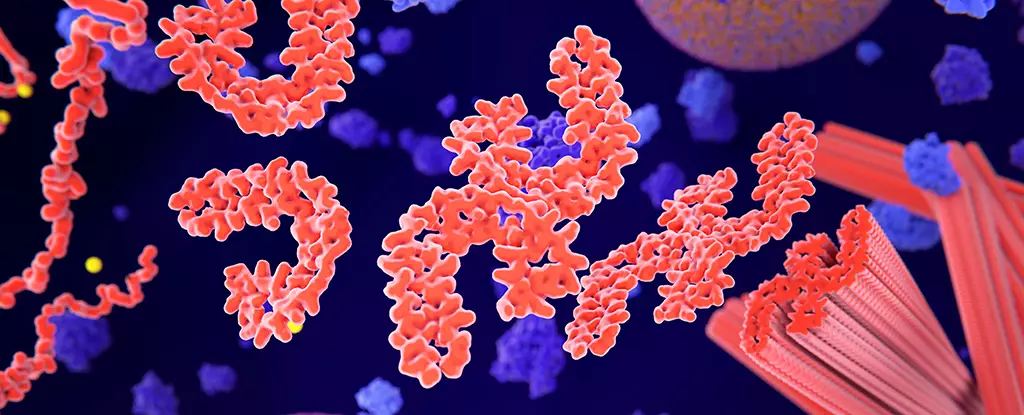Alzheimer’s disease presents one of the most formidable challenges in the field of neuroscience. Characterized by the progressive degeneration of neurons, this condition severely impacts memory and cognitive functions. Researchers have identified critical pathological features associated with the disease, such as amyloid plaques and tau protein tangles. These abnormalities culminate in neuronal dysfunction, contributing to the cognitive decline seen in patients. The search for effective therapeutic interventions has become a priority, particularly as the aging population increases the prevalence of dementia-related diseases.
Recent research has illuminated a potential breakthrough in this domain: a peptide inhibitor named RI-AG03. This novel drug has shown promise in preclinical studies, revealing its ability to diminish tau protein tangles effectively. Tau proteins perform essential roles in maintaining neuronal stability; however, their misfolded forms can lead to catastrophic consequences. What sets RI-AG03 apart is its dual-targeting capability aimed at specific regions on the tau protein that are notorious for facilitating the formation of fibrils—long, twisted aggregates that disrupt neuronal health.
In experiments conducted on fruit flies and human cell cultures, RI-AG03 exhibited a remarkable ability to not only prevent neuron degeneration but also extend the lifespan of fruit flies by up to 35%. This dramatic increase underscores the drug’s potential as a therapeutic agent capable of mitigating some of the destructive processes associated with Alzheimer’s.
The design of RI-AG03 is particularly noteworthy as it tackles two distinct ‘hotspots’ on tau proteins that serve as aggregation sites. This dual-targeting strategy addresses a fundamental challenge in developing therapies for Alzheimer’s disease—namely, effectively preventing the aggregation of tau proteins without causing adverse effects on other cellular functions. The research team, led by neuroscientists such as Amritpal Mudher from the University of Southampton, emphasizes that having a drug that can inhibit both regions of tau is unprecedented. This innovative approach may redefine the treatment landscape for neurodegenerative disorders.
Current tau aggregation inhibitors have often been hampered by significant side effects. Traditional methods have been less selective, resulting in unwanted interactions with other essential proteins in the brain. The specificity of RI-AG03 could potentially reduce these side effects, allowing for safer therapeutic options. As Tony Aggidis, another member of the research team, pointed out, the precision of RI-AG03 minimizes collateral damage, which is crucial for maintaining the delicate balance of neural function.
While the findings related to RI-AG03 are encouraging, it is crucial to emphasize that much work remains. The next phase will involve testing the drug on mice before advancing to clinical trials involving humans. The path from laboratory success to effective clinical treatment is notoriously difficult, as many promising therapies have faltered in human trials. Nevertheless, the breakthrough represented by RI-AG03 is a significant advancement toward developing treatments that can counteract or even halt the progression of Alzheimer’s disease.
The research not only signals hope for Alzheimer’s sufferers but also reflects a broader shift in the scientific community’s approach to neurodegenerative diseases. By employing computational biology and a targeted design strategy, scientists are beginning to unlock the complex mechanisms underlying these conditions. With ongoing research and collaboration, there is optimism that the long-sought goal of effective Alzheimer’s treatment is gradually becoming a tangible reality.
RI-AG03 represents a potential turning point in Alzheimer’s disease treatment. As researchers continue to refine and test this drug, the prospects for individuals affected by this devastating disease may improve. By targeting the disease’s fundamental mechanisms with greater precision, RI-AG03 embodies the hope of revolutionizing therapeutic strategies in neurodegeneration. The coming years will be critical in determining whether this innovative approach can lead to meaningful clinical benefits for patients suffering from Alzheimer’s disease and other related conditions. As the scientific community inches closer to effective interventions, the fight against Alzheimer’s gains a much-needed beacon of hope.


Leave a Reply